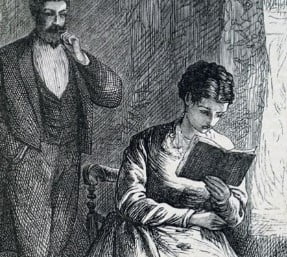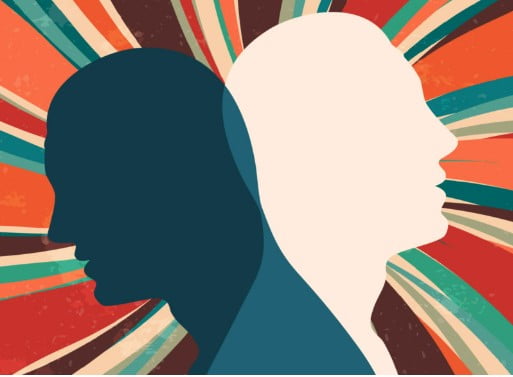Modern literature refers to the literary works that have been produced in the late 19th century to the present day. It is characterized by a break from traditional forms and conventions and an experimentation with new forms of expression. The historical context of modern literature is rooted in the social, political, and cultural changes that took place during the late 19th and early 20th centuries.
The rise of industrialization and urbanization, along with the growth of a consumer culture and the emergence of new technologies, had a significant impact on the literary landscape of the time. These changes led to a rejection of traditional forms and the development of new narrative techniques, such as stream-of-consciousness and the use of multiple perspectives.
One of the key characteristics of modern literature is its focus on the individual and the inner thoughts and emotions of the characters. It also explores the complexities of the human condition and the search for meaning and identity in a rapidly changing world.
Modern literature also reflects the increasing diversity of voices and perspectives, with the emergence of new literary movements such as postcolonial literature, multicultural literature and global literature, which highlights the experiences and perspectives of marginalized groups.

Various Literary Movements within Modern Literature
Modern literature is marked by a variety of literary movements that have emerged within it, each with their own distinct characteristics and themes. Some of the most prominent literary movements within modern literature include:
- Postmodernism
- Experimental Literature
- Postcolonial Literature
- Global Literature
- Multicultural Literature
1. Postmodernism
This literary movement, which emerged in the mid-20th century, is characterized by a rejection of traditional narrative forms and conventions, and a focus on self-referentiality and the questioning of the nature of reality and truth. Postmodern literature often employs techniques such as metafiction, intertextuality, and the use of multiple perspectives.
2. Experimental literature
This movement emphasizes the exploration of new forms and techniques of writing, and often challenges the traditional boundaries between different literary genres. Experimental literature can include elements such as unconventional narrative structures, the use of unconventional syntax and grammar, and the incorporation of visual and other non-verbal elements.
3. Postcolonial literature
This movement focuses on the literary works produced by the colonized people of Africa, Asia, and other regions that were previously under European colonial rule. It highlights the experiences and perspectives of marginalized groups, and often explores themes such as identity, power, and cultural displacement.
4. Global Literature
It is a literary movement that emerged in the 21st century, it highlights the literary works produced by authors from various countries and cultures around the world, and often explores themes such as cultural exchange, migration, and globalization.
5. Multicultural Literature
This movement emerged in the US, it focuses on the literary works produced by authors from diverse ethnic, racial and cultural backgrounds. It highlights the experiences and perspectives of marginalized groups, and often explores themes such as identity, power, and cultural displacement.
These literary movements have contributed to the richness and diversity of modern literature, and continue to shape the literary landscape of today.
Impact of technology and globalization on modern literature
In this section, we will Analyse the impact of technology and globalization on modern literature, including the rise of digital literature and the emergence of global literature.
Technology and globalization have had a significant impact on modern literature, shaping the way literature is produced, distributed, and consumed.
Rise of digital technology
The rise of digital technology has led to the emergence of digital literature, which includes forms such as e-books, online journals, and interactive literature. Digital literature allows for new forms of storytelling and the integration of multimedia elements, such as images, videos, and sound. It also allows for a more global and instantaneous distribution of literature, making it accessible to a wider audience.
Emergence of Global Literature
Globalization has also played a major role in shaping modern literature, with the emergence of global literature. This refers to the literature produced by authors from various countries and cultures around the world, and often explores themes such as cultural exchange, migration, and globalization. The increased movement of people and ideas across borders has led to a greater diversity of voices and perspectives in literature.
Additionally, globalization has also made it easier for literary works to cross borders, and for authors from different countries to be translated and published in other languages. This has led to a greater exchange of literary influences and the emergence of a truly global literary culture.
What is the Theme of Modern Literature?
In this section we will examine some of the most popular themes and motifs prevalent in modern literature, such as identity, power, and the human condition.
Modern literature is marked by an exploration of a wide range of themes and motifs, which reflect the complexities and challenges of the modern world. Some of the themes and motifs that are prevalent in modern literature include:
1. Identity

One of the central themes in modern literature is the exploration of individual identity, including issues of self-discovery, self-expression, and the search for meaning and purpose. Many modern works deal with the question of what it means to be human in a rapidly changing world, and how individuals can navigate the complexities of modern life.
2. Power

Another prevalent theme in modern literature is the exploration of power and its various forms, including issues of politics, class, race, and gender. Many modern works examine the ways in which power is exerted and resisted, and the ways in which individuals and groups are affected by it.
3. The human condition
Modern literature often deals with the fundamental questions of existence, such as the nature of life and death, the meaning of happiness, and the search for a sense of purpose. Many modern works explore the complexities of the human experience and the struggles that individuals face in their quest for understanding and fulfillment.
4. Technology and its impact
Modern literature often explores the impact of technology on human lives, it can be seen in the way it changes our perception of reality, our relationship with others, and our relationship with the environment.
5. Globalization and its impact
Many modern works of literature explore the impact of globalization on human lives, it can be seen in the way it affects our culture, our identity, and our relationship with others.
6. Social issues
Many modern works of literature explore social issues such as poverty, inequality, discrimination, and injustice.
These themes and motifs are often interwoven and overlap in the various works of modern literature, providing a rich and nuanced exploration of the human experience.
What are examples of modern literature?
In this section you will find that there are many examples of modern literature, but some of the most prominent works include:
1. James Joyce’s “Ulysses” (1922)
Modern literature refers to the literary works that have been produced in the late 19th century to the present day. It is characterized by a break from traditional forms and conventions and an experimentation with new forms of expression. The historical context of modern literature is rooted in the social, political, and cultural changes that…
James Joyce’s “Ulysses” (1922) is considered a landmark of modern literature for a number of reasons. One of its defining features is its use of stream-of-consciousness narrative style, which allows readers to access the inner thoughts and emotions of its characters. This technique allows for a deep exploration of the characters’ consciousness and the way they perceive the world around them.
The novel is set in Dublin, Ireland, and follows the lives of three characters, Leopold Bloom, Stephen Dedalus, and Molly Bloom, over the course of one day. The narrative style is complex, it uses a variety of different forms of writing, such as poetry, newspaper articles, and advertising, to provide an in-depth look at the thoughts and feelings of each of the characters as they go through their day.
2. Virginia Woolf’s “Mrs. Dalloway” (1925)
Virginia Woolf’s “Mrs. Dalloway” (1925) is a classic of modern literature that is known for its stream-of-consciousness narrative style and its exploration of the inner thoughts and emotions of its characters. The novel is set in London and follows the life of Clarissa Dalloway, a high-society woman, as she prepares for a party she is throwing that evening. The novel also follows the life of Septimus Warren Smith, a shell-shocked World War I veteran who is struggling with mental health issues.
The novel employs a stream-of-consciousness narrative style, which allows readers to access the inner thoughts and emotions of its characters. This technique allows for a deep exploration of the characters’ consciousness, the way they perceive the world around them, and the way they interact with it. This narrative style is used to create a sense of intimacy with the characters, and to provide a deeper understanding of their thoughts, feelings and actions.
Here is an excerpt from Virginia Woolf’s “Mrs. Dalloway” (1925) from the beginning of the novel:
“Mrs. Dalloway said she would buy the flowers herself.
For Lucy had her work cut out for her. The doors would be taken off their hinges; Rumpelmayer’s men were coming. And then, thought Clarissa Dalloway, what a morning–fresh as if issued to children on a beach. What a lark! What a plunge! For so it had always seemed to her, when, with a little squeak of the hinges, which she could hear now, she had burst open the French windows and plunged at Bourton into the open air. How fresh, how calm, stiller than this of the door opening and opening. The air, precisely the same, clinging to the brown of her dress, to her hair, to her bare arms.”
This passage is an example of the stream-of-consciousness narrative style used in the novel, it allows the readers to access the inner thoughts and emotions of the character Clarissa Dalloway as she goes through her morning routine. It also highlights the use of imagery and symbolism, as the freshness of the morning and the opening of the door are used to represent a new beginning and the possibility of change.
3. Toni Morrison’s “Beloved” (1987)
“Beloved” is a novel written by Toni Morrison and published in 1987. The novel is set in the aftermath of the American Civil War and is based on the true story of Margaret Garner, a former enslaved woman who killed her own child to keep her from being captured and taken back into slavery. The novel explores the legacy of slavery and racism in the United States, and the experiences of African American women.
The story is narrated by Sethe, a former enslaved woman who has escaped to Ohio and is trying to build a new life for herself and her family. The novel explores the trauma that Sethe and other characters have experienced as a result of slavery and the ways in which this trauma continues to shape their lives.
4. Junot Diaz’s “The Brief Wondrous Life of Oscar Wao” (2007)
Junot Diaz’s “The Brief Wondrous Life of Oscar Wao” (2007) is a Pulitzer Prize-winning novel that explores the experiences of immigrants, the complexities of identity and the human condition. The novel is set in the United States and the Dominican Republic, and follows the life of Oscar Wao, a Dominican-American man, and his family. The novel is told from multiple perspectives and covers several decades of Oscar’s life, as well as the lives of his family members.
One of the main themes of the novel is the experience of immigrants and the complexities of identity. The novel explores the experiences of Oscar and his family, who are immigrants from the Dominican Republic, and how they navigate the challenges of living in a new country, while also trying to maintain their cultural heritage. The novel also explores the complexities of identity, as the characters struggle to reconcile their cultural heritage with their American identity.

